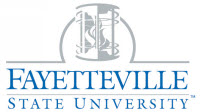Below is a summary of the abstract you submitted. Presenting author(s) is shown in bold.
If any changes need to be made, you can modify the abstract or change the authors.
You can also download a .docx version of this abstract.
If there are any problems, please email Dan at dar78@pitt.edu and he'll take care of them!
This abstract was last modified on June 4, 2019 at 1:54 p.m..

Bacteriophages are the most numerous microbes in the biome and display massive genetic diversity. Thirteen phages capable of replication in Mycobacterium smegmatis mc<sup>2</sup>155 were isolated in the Sandhills region of North Carolina. Three phages (Datway, Leogania, and Lephleur) were sequenced at the Pittsburgh Bacteriophage Institute. All three of the sequenced phages were novel. Lephleur lacks any lysogeny-associated genes which is consistent with other members of the B2 subcluster. Additionally, Mycobacterium Phage Cornie (subcluster F5), was confirmed to possess a non-functional integrase gene. Therefore, Cornie is the only known F cluster phage that is virulent.
